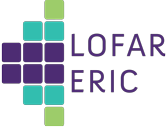Speaker
Description
We combine the power of blind integral field spectroscopy from the Hobby-Eberly Telescope (HET) Dark Energy Experiment (HETDEX) with sources detected by the Low Frequency Array (LOFAR) to construct the HETDEX-LOFAR Spectroscopic Redshift Catalog. Starting from the first data release of the LOFAR Two-metre Sky Survey (LoTSS), including a value-added catalog with photometric redshifts, we extracted 28,705 HETDEX spectra. Using an automatic classifying algorithm, we assigned a star, galaxy, or quasar label along with a velocity/redshift. We supplemented these classifications with the continuum and emission line catalogs of the internal, fourth data release from HETDEX (HDR4). We measured 9,087 new redshifts; in combination with the value-added catalog, our final spectroscopic redshift sample is 9,710 sources. This new catalog of distances facilitates research to determine the [O II] emission properties of radio galaxies from 0.0 < z < 0.5 and the Lyman-alpha emission characteristics of both radio galaxies and quasars from 1.9 < z < 3.5. Additionally, by combining the unique properties of LOFAR and HETDEX, we will be able to measure star formation rate (SFR), stellar mass, and reddening properties. Using the Visible Integral-field Repicable Unit Spectrograph (VIRUS), we can measure the emission lines of [O III], Hβ, [Ne III], and [O II] and evaluate line-ratio diagnostics to determine whether the emission from these galaxies is dominated by AGN or star formation.

